Top Photo: Winston Churchill in parade with V for Victory. D-Day Remembered images. From the Collection of the National World War II Museum.
Victor de Laveleye was a Belgian WWI veteran, three-time Olympian, president of the Liberal Party, and minister of justice—but, more than any of these achievements, he is best remembered for a single radio broadcast from London in 1941.
Prior to the outbreak of World War II, de Laveleye was well known in Belgium for his political achievements, especially his 1936 victory over extreme right-wing politician and later Nazi collaborator Léon Degrelle. De Laveleye was progressive, popular, and persistent, but when the German army marched into Belgium in May 1940, he was quickly cast aside as his government was replaced with Nazi Party members. Fearing he would be arrested for his progressive beliefs and political activism, de Laveleye fled Belgium shortly after the occupation began, making his way to London in July 1940.
He immediately found success in the UK, where he was asked to head the Belgian division of the British Broadcasting Corporation (BBC). De Laveleye became the voice of Radio Belgique, or Radio Belgium, broadcasting in French to the European continent. The first broadcast went out that September, reaching ordinary Belgians who had been cut off from the outside world. For the first time since the Nazis took over, Belgians were now able to hear British reports about the war effort in their own language. Not only did the radio program keep up morale among those suffering under occupation, but it bolstered resistance movements within the country, providing them with information on the war effort against Germany and how to support it.[1]
Origins of V for Victory
The broadcast that cemented de Laveleye’s place in history did not air until January 1941. The idea for the broadcast came to him during an air raid in London. He had been sitting with a BBC associate and the Belgian politician Roger Motz in the Hotel Devere in London’s West End, where they were brainstorming mottos and rallying signals for those in occupied Europe to resist the Nazis and hold out hope for liberation. Huddled together in an air raid shelter as London buildings crashed down above them, they distracted themselves by continuing to talk about work. Suddenly, de Laveleye was struck by an idea: “V” was the perfect symbol. V was victory, the French victoire, and the Flemish Vryheid, freedom. The following day, presenting the idea to the BBC, de Laveleye was met with enthusiastic approval, “and a few days later, on January 14, 1941, the symbol which today carries the hopes of all men in the conquered nations was heard for the first time on the B.B.C. microphone.”[2]
In a short broadcast to people of occupied Belgium, France, the Netherlands, and North Africa, de Laveleye called upon them to resist the Nazi regime, to remind German soldiers that they were neither wanted, welcome, nor safe in their countries. He told them to chalk the letter V on buildings and on the streets, and to paint it wherever they could.[3] This V, he said, was a symbol of defiance, of freedom, and of final victory.[4] This symbol, in addition to uniting people who spoke a variety of languages, had the advantage of being easy and quick to draw. Prior to de Laveleye’s campaign, civilians resisting the Nazi occupation often wrote RAF (Royal Air Force) on buildings to show their support for the British and Commonwealth armies. The V was much quicker, with only two strokes required to create it, making it much less likely that the graffiti writers would be caught and arrested.
De Laveleye’s broadcast took off like wildfire. Soon, there were reports that Vs were everywhere, marking every street and building in Belgium, France, and the Netherlands. Even in churches, worshippers carved the V into pews. Others wrote “Long live Queen Wilhelmina [of the Netherlands]” and “Bravo, Churchill.”[5] To indicate their comradery, resisters signaled to each other by flashing the V sign with their hands. This public form of dissent was not lost on the invading forces: “Wherever they went, the German soldiers were keenly aware of mocking eyes and significant smiles.”[6]
The BBC took notice of the effect in Western Europe and decided to extend the sign into a broader campaign. First it was expanded to the French broadcast, then the Dutch.[7] Six months after the Radio Belgique broadcast, Douglas Ritchie, better known as his BBC radio persona Colonel Britton, announced the “V for Victory” campaign to all of Europe in seven languages:
Like a fresh wind blowing in from the sea, the campaign spread over Europe. V, which stood for victory in English and victoire in French, became vryheid (freedom) in Dutch, vitezstvi (victory) in Czech, vitestvo (heroism) in Serbian, and in Norwegian ve vil vinne, which means just what it sounds like in pidgin English.[8]
Calling his listeners the “V army,” Colonel Britton urged them to “mobilize” on July 20, 1941. He called for courageous action:
He urged people of the occupied countries to mark the letter everywhere, even on the backs of German officers. … He told people how to tap it in Morse Code, three dots and a dash, recommended it as a signal for calling waiters, knocking on doors, blowing auto horns, bugles and train whistles. … He told them to call for Beethoven’s Fifth Symphony, whose opening “fate-knocks-at-the door” motif is three short bars and one long one. … The colonel told Europeans to sit in cafés with their legs stretched out V-wise. He told them to wave to one another with the first two fingers of the hand spread V-wise. He told them to make the letter V with their knives and forks in restaurants, to set stopped clocks at five after eleven. The Moscow radio jammed German broadcasts with the Morse V.[9]
At midnight on the 20th, Colonel Britton read out a message from British Prime Minister Winston Churchill himself: “The ‘V’ sign is the symbol of the occupied territories and a portent of the fate awaiting the Nazi tyranny. … So long as the peoples of Europe continue to refuse all collaboration with the invader it is sure that his cause will perish and that Europe will be liberated.”[10] Significantly, this was the first time that Churchill had endorsed the V sign, a symbol he would use throughout the war. Following Churchill’s rousing words, Colonel Britton urged listeners to be on the lookout for new V signs, emblems of solidarity and resistance across the continent:
In a few minutes there will be millions of new ‘Vs’ on walls and doors and pavements all over Europe. It is dark now. If you listen you may hear distant bugles sounding and the ‘V’ rhythm or drums tapping. Perhaps you’ll hear a train whistle sounded by one of your comrades. Put your ‘V’ up as a member of this vast ‘V’ army. Do it during the daytime too. Your friends will be doing it from one end of Europe to the other.[11]
Throughout the day, the campaign broadcast in 60 languages across Europe, repeating over and over the call to action. Each broadcast began with Beethoven’s Fifth Symphony, the first notes sounding like V in Morse code.[12] The symphony, with its message about fate knocking on the door, echoed Churchill’s message that the V was a “portent of fate” for the Nazis, foreshadowing their downfall.
Churchill and V for Victory
It did not take long for the campaign to take hold across Europe. Vs began to show up on buildings, in the streets, and chalked on the backs of Nazi officers. They made their way into prisons, ghettos, forced labor camps, and even concentration camps.[13] The symbol united occupied Europe in an unprecedented way, in no small part due to Churchill’s adoption of the campaign.
Following the radio campaign, Churchill began making the V sign with his hands at nearly every public appearance and especially when visiting other countries.[14] Though it became a trademark of his public persona, he was corrected numerous times by his aides when he flashed the V sign with his palm facing inwards, a rude gesture akin to the middle finger among working-class Brits and Irishmen. Churchill’s assistant private secretary, Sir John Colville, remarked before an appearance in Liverpool that “the PM will give the V sign with two fingers in spite of the representations repeatedly made to him that this gesture has quite another significance!”[15]
Despite this difference in meaning, the V sign was a hit in Britain. During Churchill’s surprise visit to Liverpool in September 1941, he flashed the V sign twice, and the crowd went wild. Hundreds of people who had gathered to see him flashed the V sign back.[16] The V sign became so popular in England that people even drew it on buildings across the country, imitating the European campaign.[17]
When he visited the United States in December 1941, following the bombing of Pearl Harbor and America’s entrance into the war, Churchill addressed the Senate, bolstering hope and expressing gratitude for the countries’ alliance. As he left the podium, he held up his right hand and made the V sign. The senators cheered and exclaimed their approval.[18] There would be victory for both nations.
By the time Churchill visited America, the V for Victory campaign was already well known by anyone who followed the war. Though many Americans were isolationists until the bombing of Pearl Harbor, the war in Europe was reported on heavily, and photos of Churchill were everywhere. Even some of Colonel Britton’s broadcasts had made it across the Atlantic. On the day of the V army’s mobilization, some Americans drew their own Vs in solidarity:[19]
The campaign has even spread to the United States. A ten-foot-high V was placed on the County Court House of Indiana, Pennsylvania. As soon as the sign appeared bathed in floodlights 300 feet above the heads of the curious townsfolk they were quick (says Reuter) to grasp its significance. The Boston radio sent out specially for the European countries national programmes celebrating the day’s message of freedom, and one radio commentator described the ‘V’ campaign as ‘the most amazing piece of propaganda devised in this war.’[20]
Soon, “victory” became the key word in keeping up morale.
V for Victory in the United States
When the US joined the war in December 1941, the V for Victory slogan was adopted and put to use in devising defense programs and propaganda campaigns. As recruitment ramped up, posters were made with the V, encouraging young men to become Marines.
As the War Production Board transitioned peacetime, consumer industries into manufacturers of military equipment, advertising took advantage of the already successful campaign to encourage workers to “increase production” through “non-stop work.”
Products like gum also capitalized on the success of the V for Victory campaign, advertising both the production and its consumption by soldiers serving overseas. In the United States, as compared to central Europe, V for Victory did not mean resistance so much as it meant helping the war effort, whether that be working hard, rationing food, building a victory garden, or buying war bonds.
To show their support, many women on the Home Front wore V pins as their sweetheart pins. Children saved money in V-shaped piggy banks, and Vs appeared on various household products, like window decorations and drinking glasses.
The V continued to be a popular symbol throughout the war, both in propaganda in Allied countries and to show support for Allied troops as they advanced. When Allied soldiers marched into previously occupied countries, citizens invariably greeted them with the V sign, and when VE and VJ days finally arrived, the V sign was seen at every parade.
The ‘Double V’ Campaign
But for many in America, the V did not represent liberation or the end of oppression. For Black Americans, the V campaign, and indeed much of the rhetoric around the war, was hypocritical. In arguing for American involvement in the war, President Franklin Delano Roosevelt had declared that Americans should fight for our four freedoms: freedom of speech, freedom of worship, freedom from want, and freedom from fear. He went on to discuss the “foundations of a healthy and strong democracy,” which consisted of “equality of opportunity for youth and for others” and “the preservation of civil liberties at all.”[21] For Black Americans, these ideals had yet to be met. In Jim Crow America, they did not have equality of opportunity nor full civil liberties, and when war was declared, many Black Americans questioned whether they should fight for a country that did not grant them the same freedoms that it was fighting for abroad.
James Gratz Thompson was one person who spoke these thoughts publicly. In December 1941, shortly after the attack on Pearl Harbor, Thompson realized that he would soon be joining the war. He had registered with the Selective Service the year before and would soon be drafted. Concerned with what entering a segregated service would mean for him and his future, Thompson wrote a letter to The Pittsburgh Courier, the country’s largest Black newspaper, expressing his dismay:[22]
Being an American of dark complexion and some 26 years, these questions flash through my mind: ‘Should I sacrifice my life to live half American?’ ‘Will things be better for the next generation in the peace to follow?’ ‘Would it be demanding too much to demand full citizenship rights in exchange for the sacrificing of my life? Is the kind of America I know worth defending?’[23]
Presuming (correctly) that he would be called disloyal or a traitor for these views, Thompson made sure to be clear that he supported the war effort, while still calling for civil rights. Returning to the meaning of the V for Victory sign, he argued that it should be a victory for all, against all oppressors:
The V for Victory sign is being displayed prominently in all so-called democratic countries which are fighting for victory over aggression, slavery and tyranny. If this V sign means that to those now engaged in this great conflict then let we colored Americans adopt the double VV for a double victory. The first V for victory over our enemies from without, the second V for victory over our enemies from within. For surely those who perpetrate these ugly prejudices here are seeking to destroy our democratic form of government just as surely as the Axis forces. This should not less our efforts to bring this conflict to a successful conclusion; but should and would make us stronger to resist these evil forces which threaten us. America could become united as never before and become truly the home of democracy.[24]
In the following days, The Pittsburgh Courier received hundreds of letters in support of Thompson’s message. He had struck a chord with his fellow Black Americans who were unsure about the war effort and who were unhappy about entering a segregated military where they could not be led by Black commanders. They were put in “separate and unequal barracks, mess halls, and hospitals” due to discriminatory and inefficient policies.[25] Even when they donated blood, it was segregated by the Red Cross.
The Pittsburgh Courier ran with the momentum started by Thompson’s letter. They immediately implemented his “Double V” campaign, proclaiming: “We have adopted the ‘Double V’ war cry—victory over our enemies at home and victory over our enemies on the battlefields abroad. Thus in our fight for freedom we wage a two-pronged attack against our enslavers at home and those abroad who would enslave us.”[26]
The campaign took over the front page of The Courier at least once a week. Other newspapers also took up the cause, including The Washington Tribune.[27] A brilliant public outreach campaign ensued, garnering the support of prominent politicians, like then-governor of Massachusetts, Leverett Saltonstall, and businessmen like then-president of the National Broadcasting System, David Saranoff.[28] Andy Razaf, lyricist for “Ain’t Misbehavin’,” and songwriter J. C. Johnson collaborated to create a hit song, “Yankee Doodle Tan,” to help popularize the movement. The newspapers also started selling Double V pins and war bonds, and even encouraged the establishment of Double V clubs to advocate for equal rights. By mid-1942, VV clubs were everywhere, from California to Connecticut and from Michigan to Texas.[29]
Over the year and a half that the Double V campaign ran, it succeeded in uniting Black Americans and raising awareness of the effects of racism and discrimination. Despite facing fierce opposition, the Double V campaign plowed ahead and set the stage for further civil rights work, including the drive to desegregate the military, which was finally achieved in 1948, when President Harry S. Truman signed Executive Order 9981. The Double V campaign was one of the many precursors to the Civil Rights Movement.
And so, V for Victory became one of the most enduring signs of the war, started by a Belgian refugee, politician and broadcaster fleeing persecution. V for Victory meant many things to many people; by the war’s end, it symbolized resistance, freedom, peace, liberation, and equality. Victory was so much more than winning the war; it was about building a better, more just world.
References:
John Morton Blum, V was for Victory (New York: Harcourt Brace Jovanovitch, 1976).
David Boyle, V for Victory: The Wireless Campaign that Defeated the Nazis (Steyning: The Real Press, 2016).
Footnotes:
[1] Céline Rase, ‘Les ondes en uniforme: La propagane radiophonique allemande en Belgique occupée (1940–1944),’ Cahiers d’Histoire du Tempes present, 23 (2011), pg. 151.
[2] Marcel Henri Jaspar, ‘Father of the V Campaign,’ The Winnipeg Tribune, 29 August 1941, pg. 7.
[3] TIME Magazine, ‘Frivolous V,’ 28 July 1941, TIME, pg. 20.
[4] Gilly Carr, ‘The Archaeology of Occupation and the V-sign Campaign in the Occupied British Channel Islands,’ International Journal of Historical Archaeology, 14 (2010), pgs. 575–592.
[5] Louis de Jong and Joseph W. F. Stoppelman, The Lion Rampant: The Story of Holland’s Resistance to the Nazis (New York: Querido, 1943), pg. 202.
[6] Louis de Jong and Joseph W. F. Stoppelman, The Lion Rampant: The Story of Holland’s Resistance to the Nazis (New York: Querido, 1943), pg. 336.
[7] David Hendy, The BBC: A People’s History (London: Profile Books, 2022), pg. 248.
[8] TIME Magazine, ‘Frivolous V,’ 28 July 1941, TIME, pg. 20.
[9] TIME Magazine, ‘Frivolous V,’ 28 July 1941, TIME, pg. 20.
[10] The Manchester Guardian, ‘The “V” Army Mobilises,’ The Manchester Guardian, 21 July 1941.
[11] The Manchester Guardian, ‘The “V” Army Mobilises,’ The Manchester Guardian, 21 July 1941.
[12] The Age, ‘New “Victory” Offensive,’ The Age, 22 July 1941.
[13] Gilly Carr, ‘The Archaeology of Occupation and the V-sign Campaign in the Occupied British Channel Islands,’ International Journal of Historical Archaeology, 14 (2010), pgs. 575–592.
[14] Acme, ‘V for Victory,’ Daily News, 25 August 1941, pg. 244.
[15] Martin Gilbert, Winston S. Churchill: The Finest Hour, 1939–1941 (Boston: Houghton Mifflin Company, 1983), pg. 1202.
[16] Liverpool Echo, ‘Premier’s Surprise Visit to Liverpool,’ Liverpool Echo, 27 September 1941.
[17] Ariane Mak, ‘La guerre des V.: Le Mass-Observation et les graffitis du “V de la Victoire” en Grande-Bretagne (1941–1945),’ Revue d’Histoire, 156 (2022), pgs. 103–128.
[18] The Indianapolis News, ‘Churchill Gives “V” Sign in Senate,’ The Indianapolis News, 27 December 1941.
[19] There is also a V and its morse code equivalent drawn on a building in Wilton, New Hampshire: https://www.wiltonnh.gov/about_wilton/interesting_places__hidden_in_plain_sight/v_for_victory_graffiti.
[20] The Manchester Guardian, ‘The “V” Army Mobilises,’ The Manchester Guardian, 21 July 1941.
[21] Franklin D. Roosevelt Annual Message to Congress, January 6, 1941, Records of the United States Senate, SEN 77A-H1, National Archives.
[22] Matthew F. Delmont, Half American: The Epic Story of African Americans Fighting World War II at Home and Abroad (New York: Viking, 2022), pg. xii.
[23] James Gratz Thompson, “Should I Sacrifice to Live ‘Half-American’?,” Letters to the Editor, The Pittsburgh Courier, January 31, 1942, pg. 3.
[24] Ibid.
[25] Matthew F. Delmont, Half American: The Epic Story of African Americans Fighting World War II at Home and Abroad (New York: Viking, 2022), pgs. 104–105.
[26] The Pittsburgh Courier, ‘The Courier’s Double “V” for a Double Victory Campaign gets Country-Wide Support,’ The Pittsburgh Courier, 14 February 1942.
[27] The Pittsburgh Courier, ‘Five Newspapers Join the Double V Campaign,’ The Pittsburgh Courier, 13 June 1942.
[28] The Pittsburgh Courier, ‘“America in Principal, Patriotic in Spirit,”… The Courier’s “Double V” Campaign Receives Cooperation of More American Leaders,’ The Pittsburgh Courier, 20 June 1942.
[29] The Pittsburgh Courier, ‘Five Newspapers Join the Double V Campaign,’ The Pittsburgh Courier, 13 June 1942.
Jennifer Putnam, PhD
Jennifer Putnam is a former Research Historian at the Jenny Craig Institute for the Study of War and Democracy at the National World War II Museum.
Cite this article:
MLA Citation:
APA Citation:
Chicago Style Citation:
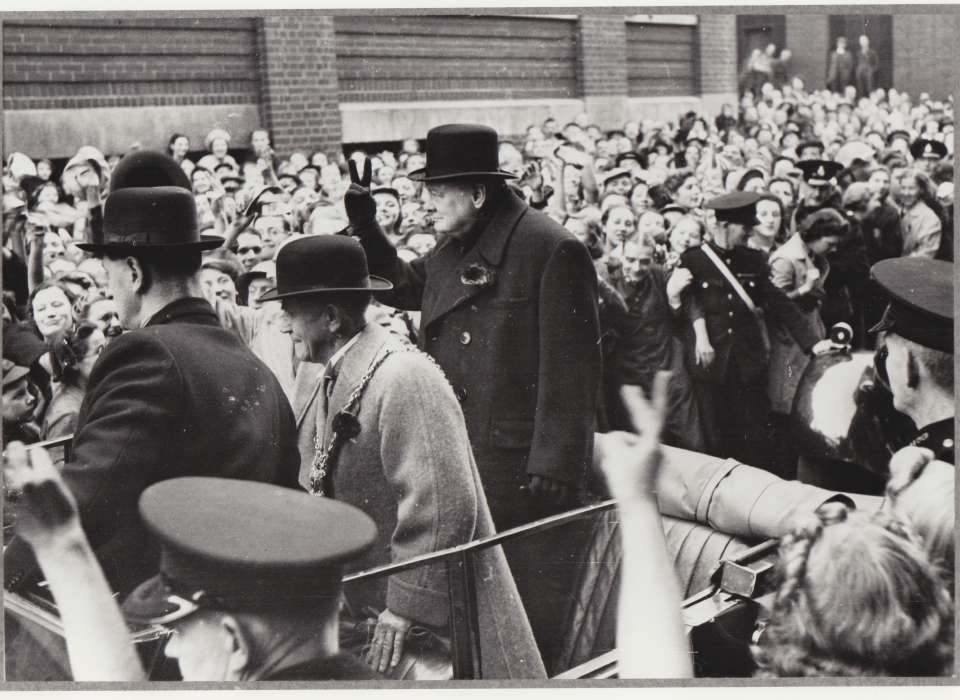
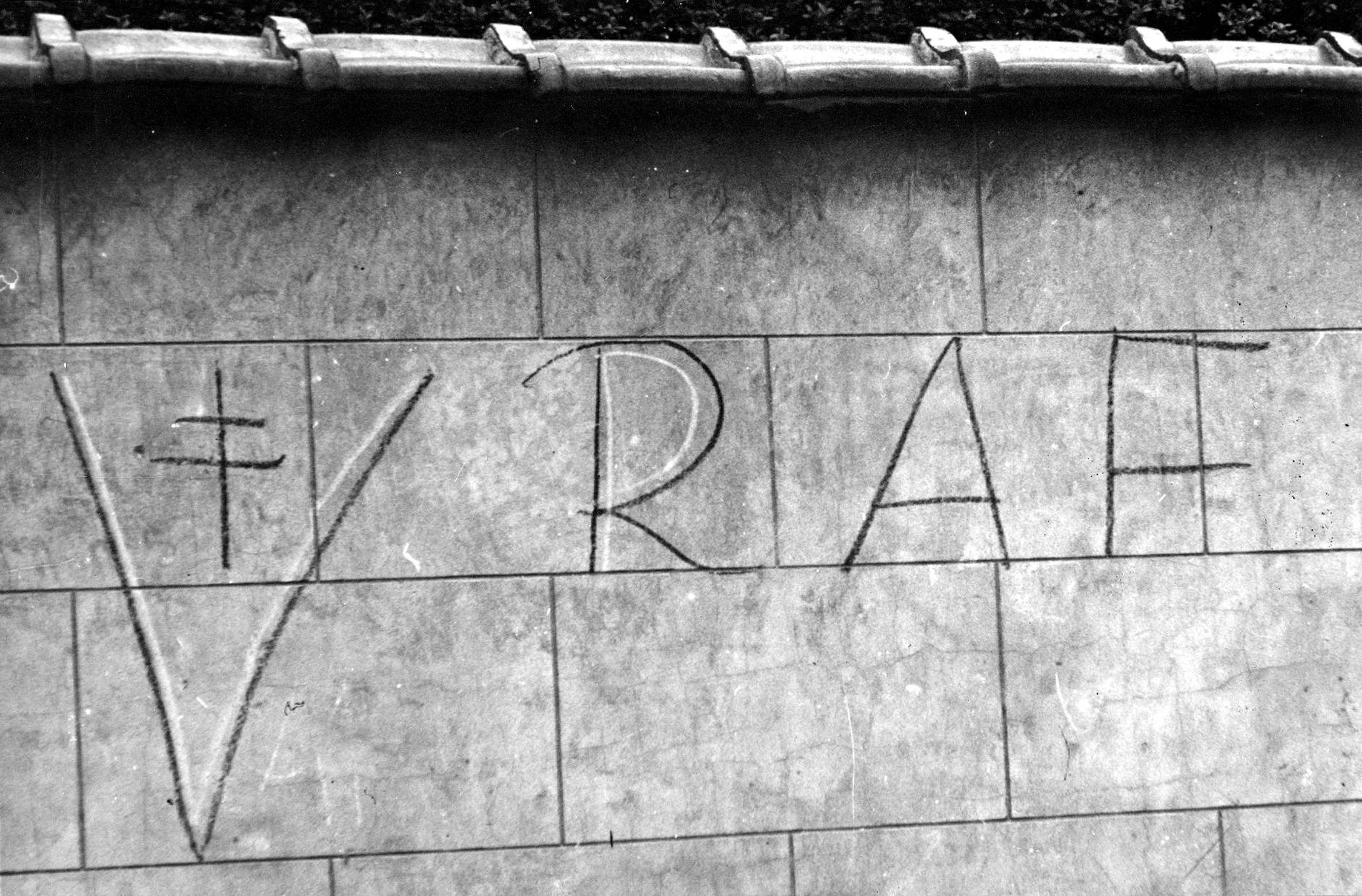

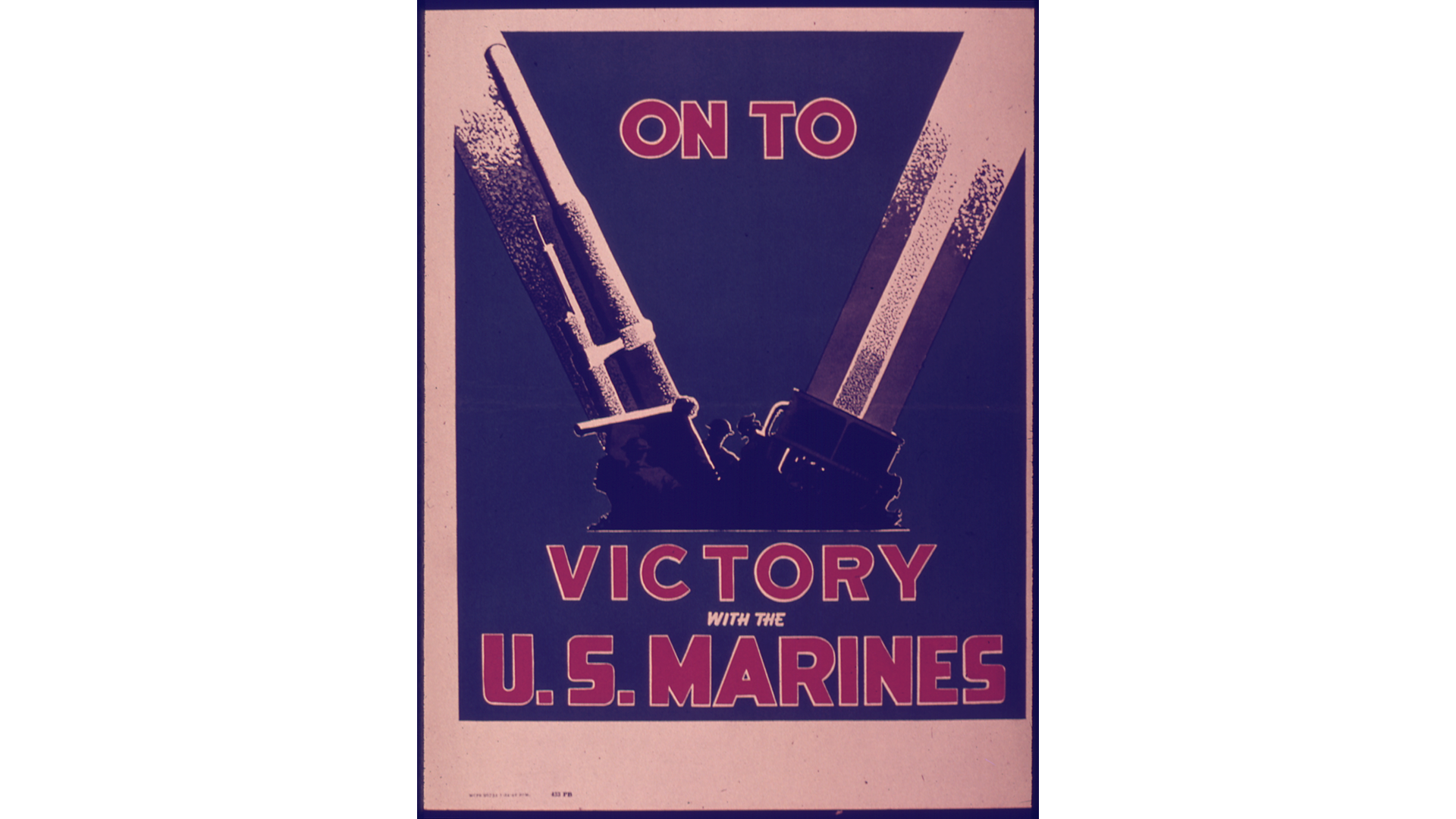
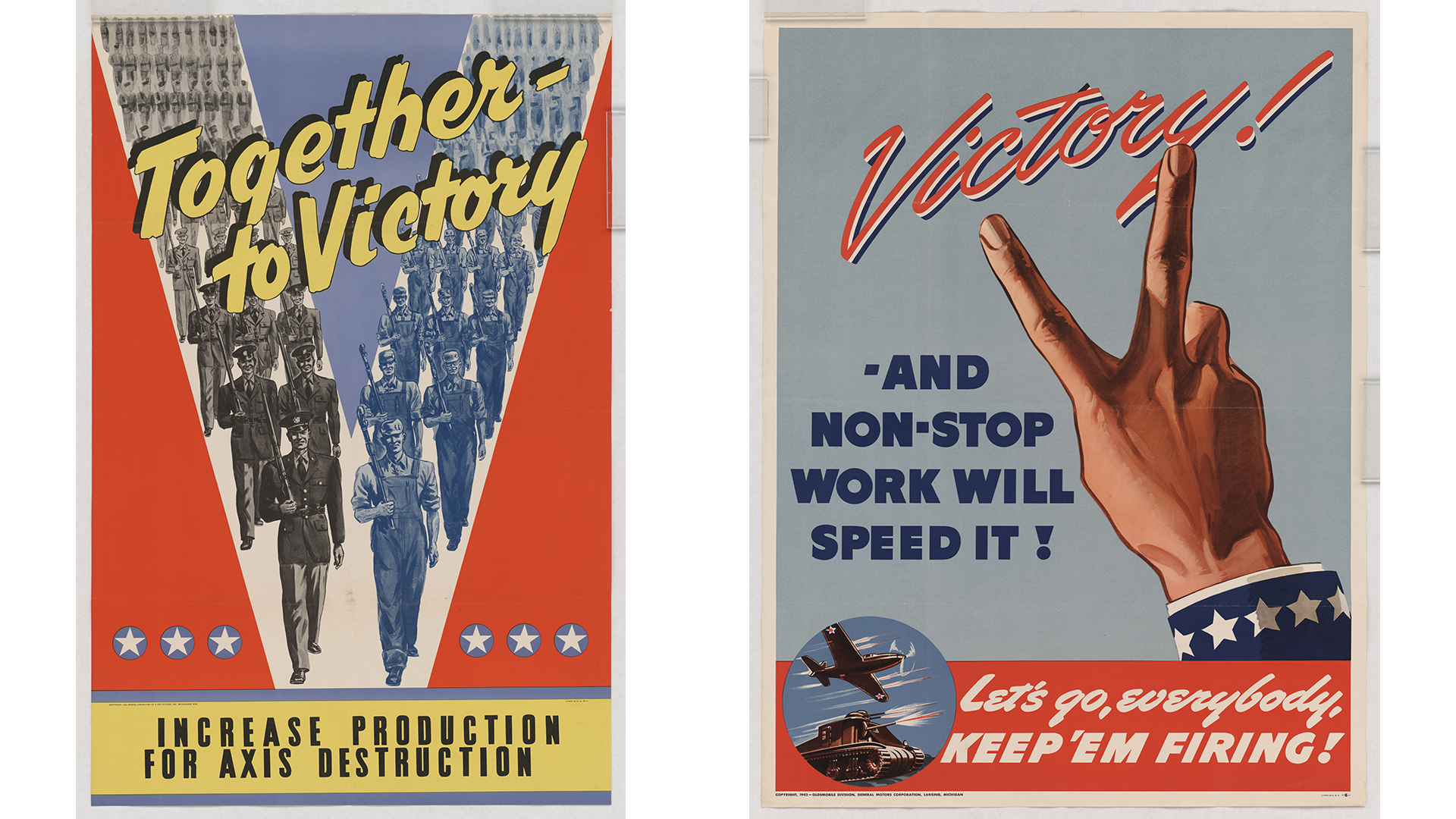
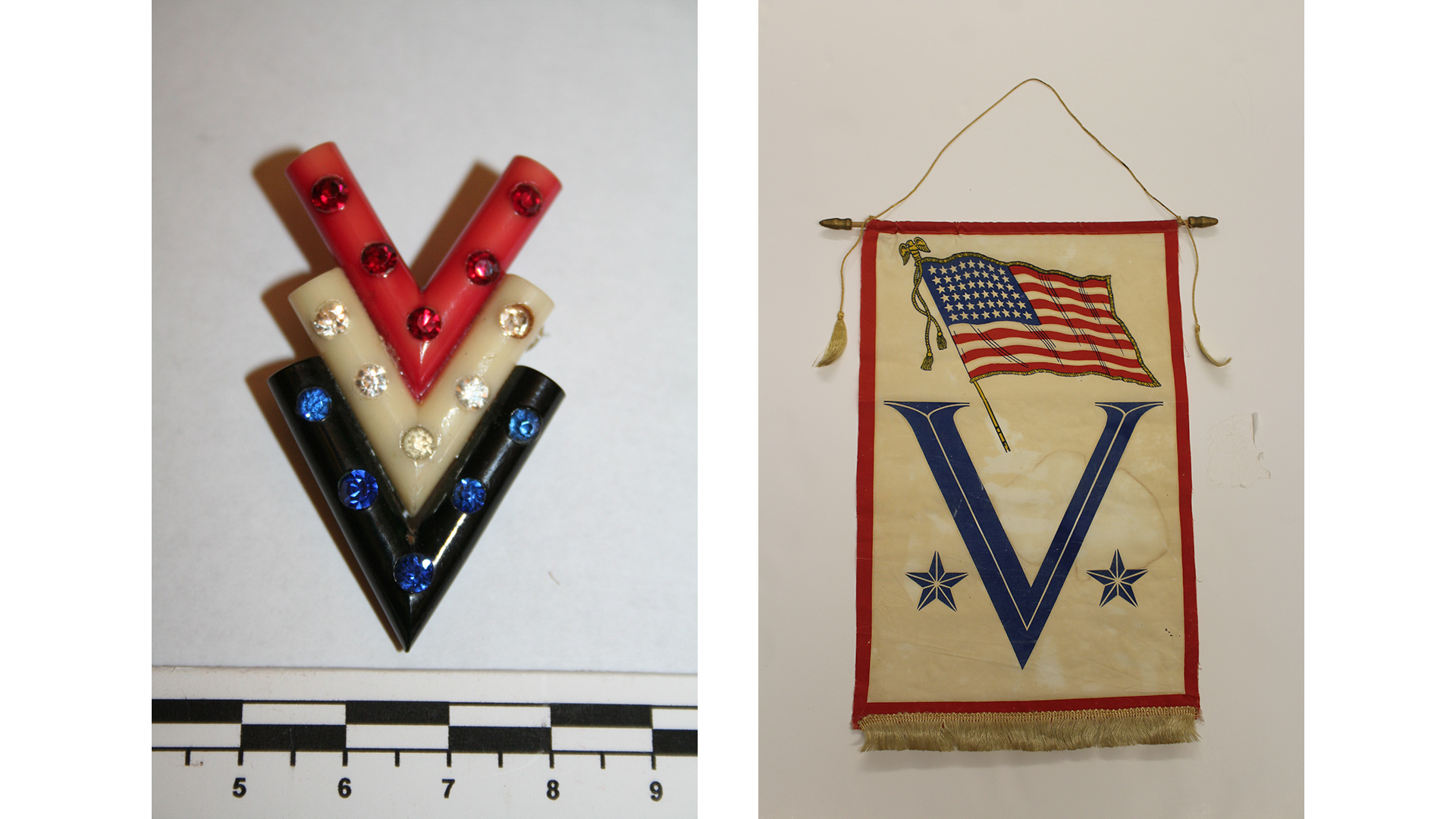
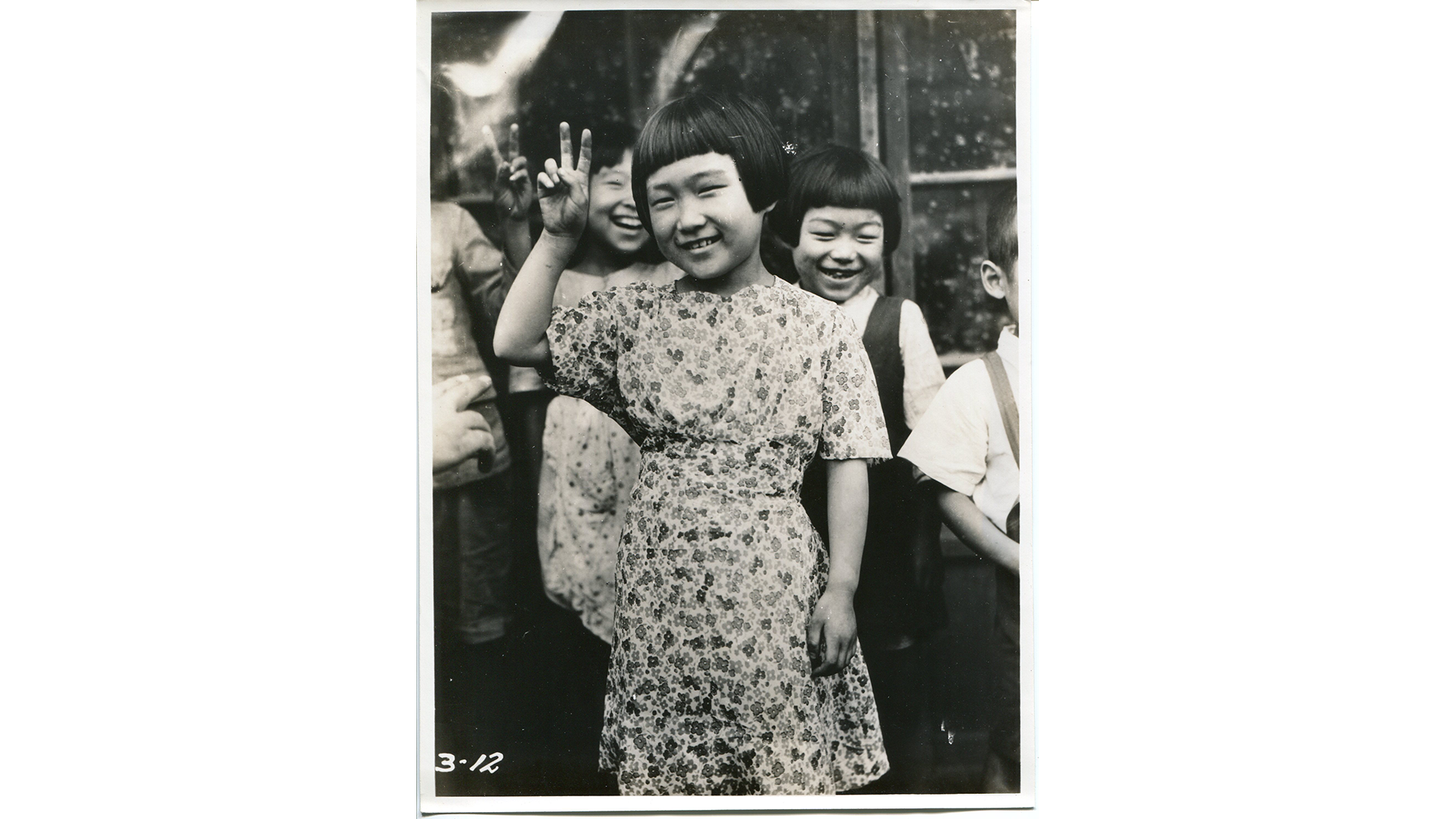
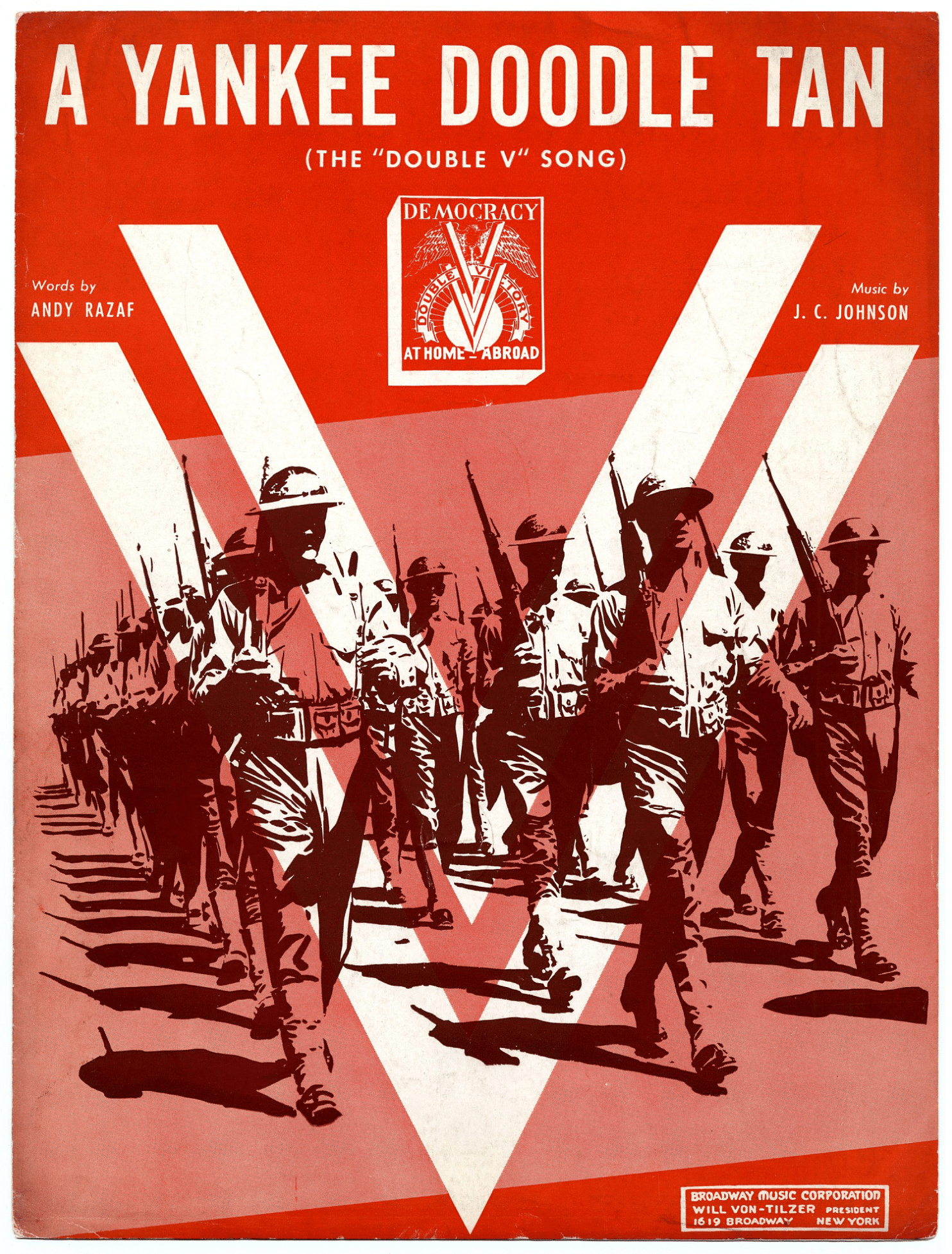





![Max Fuchs, New York City cantor, sings as Rabbi Sydney [sic] Lefkowitz, Richmond, VA, conducts the first Jewish services from Germany.](/sites/default/files/styles/max_650x650/public/2025-10/image1.jpg)



